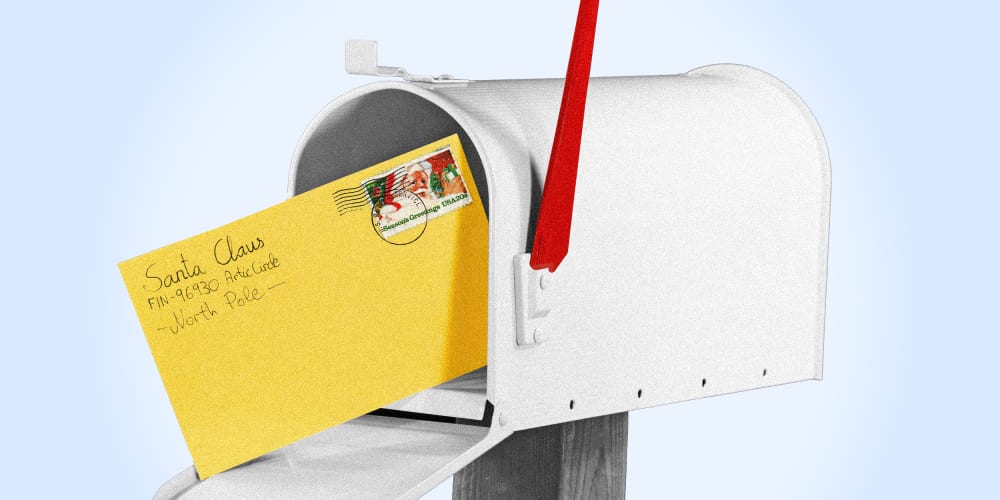As I write this, Christmas is just days away and my fiancée’s present is… somewhere in the United States of America. Where exactly, I’m not entirely sure. I’m not sure if it will actually make it here by Dec. 25 — and I can’t say that I’m surprised. Or, for that matter, all that upset.

You see, the package I’m waiting for is being shipped via the United States Postal Service and to say that the boys and girls in blue have had a hard year would be a severe understatement. Any inconvenience we, the consumers and customers of the Postal Service, have experienced this holiday season is a drop in the bucket compared to what they’ve gone through at post offices around the country.
As the packages piled up, so did the coronavirus cases in the packed sorting warehouses, where sorters showed up despite showing symptoms for fear of losing their jobs.
Remember what it was like when the pandemic kicked off in March and stay-at-home orders went out in a bunch of states? The rush of people turning to online shopping — both to keep from going outside and as a mental balm against the crushing ennui that Covid-19 inspired — and the resulting crunch left the delivery drivers at the USPS, FedEx and UPS all nearly broken under the weight of the collective tonnage of our purchases.
As the packages piled up, so did the coronavirus cases in the packed sorting warehouses, where sorters showed up despite showing symptoms for fear of losing their jobs. But while parcel shipping increased, regular mail plummeted, putting the Postal Service in a bind. Already by April, there were warnings that the USPS would run out of cash entirely before September.

Complicating things further was the war against the Postal Service that President Donald Trump launched as part of his re-election bid. Trump argued early and often that mail-in voting was rife with fraud, using this blatant lie as a reason to not provide more funding to the USPS. Congress eventually managed to get a sizable loan to a stabilizing Postal Service but not without strings. And the struggles it’s facing financially aren’t going away anytime soon.
Trump also named shipping executive Louis DeJoy as the new US Postmaster General, which only added to the chaos. DeJoy instituted changes that he and his defenders claimed were meant to maximize productivity from postal workers. Instead, his orders, including dismantling sorting machines and ordering mail workers not to finish delivering every item on their route by the end of their shift, made things worse. (DeJoy rolled back many of those changes in September in response to the outcry.)
There are currently about 641,000 postal workers working out of 31,500 facilities. Of those, nearly 19,000 have called in sick or are isolating.
Thankfully the Postal Service came through for the election, despite Trump’s best efforts. But now things are hellacious as the Christmas surge has hit, despite retailers encouraging early shopping. UPS and FedEx basically saw this coming — the former placed shipping limits on some of the biggest retailers this season to keep performance levels high. The effect, though, has been the overflow going to USPS, which already handles an estimated 40 percent of Amazon’s deliveries and the so-called “last-mile” of the private companies’ deliveries in rural areas.
“The plant’s so backed up that they’re sending raw unsorted mail, whole trays to carriers to manually sort and case ourselves,” Alex Fields, a rural letter carrier In Knoxville, Tennessee told Labor Notes. “Everyone’s spending an hour a day just casing up mail that’s supposed to be run through a machine, because there’s no one to run the machine. That’s on top of having 400 packages to deliver on your route.”
The backlog has become so severe that in some facilities employees are basically forced to craft tunnels out of the boxes, according to new reporting from the Washington Post.
“Some processing plants are now refusing to accept new mail shipments. The backlogs are so pronounced that some managers have reached out to colleagues in hopes of diverting mail shipments to nearby facilities. But often, those places are full, too. Meanwhile, packages sit on trucks for days waiting for floor space to open so the loads can be sorted.”
This is why your packages are still “in transit,” and why it won’t be helpful to call with your tracking number. USPS package volumes are up 30-40%. Staffing is short due to COVID cases and quarantines. The mail is simply backed up. Remember to thank your carriers! #USPSdelays pic.twitter.com/cFQ6CSmBH8












